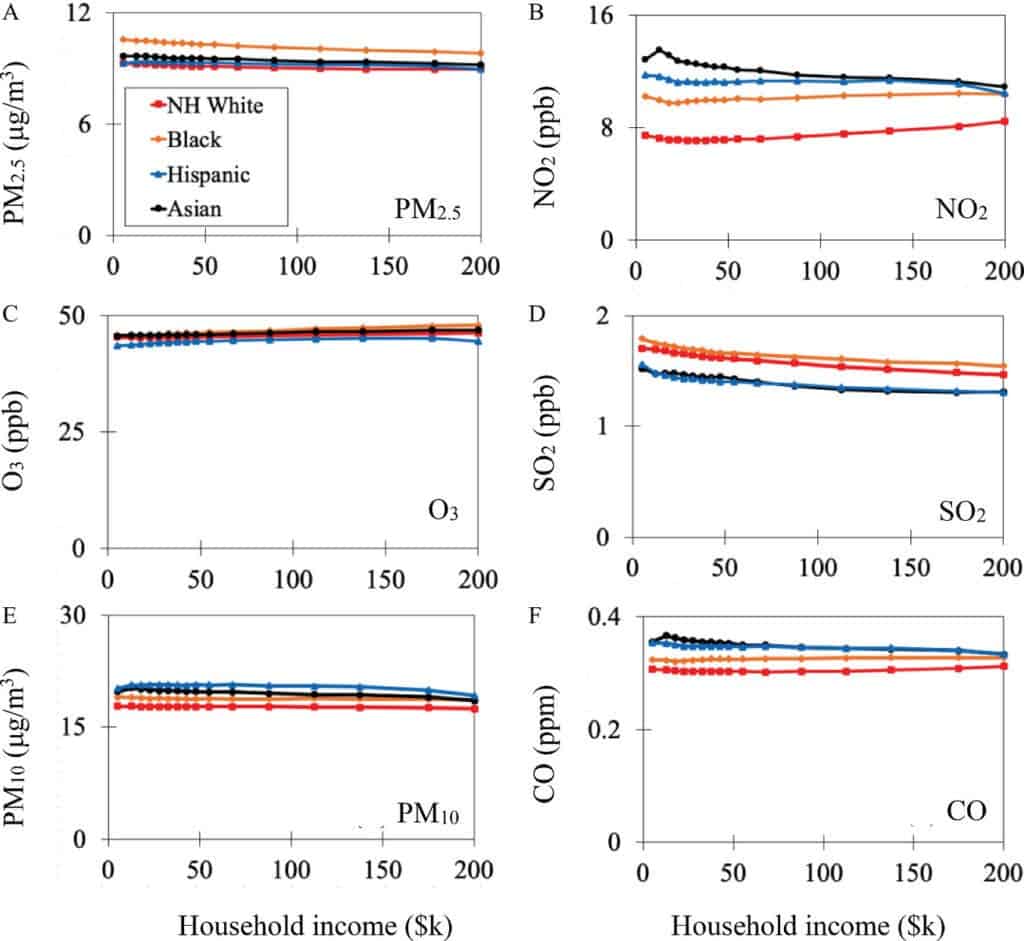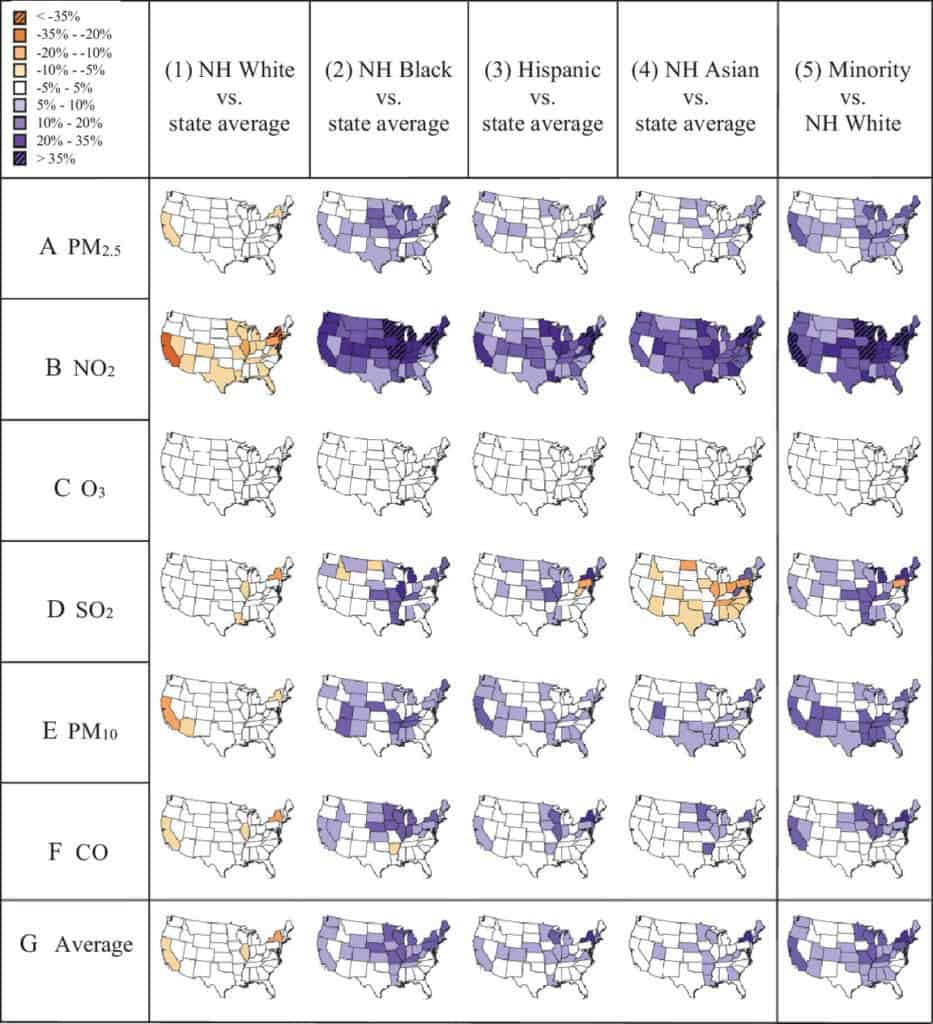When it comes to environmental justice in the US, there’s still a long way to go — things are moving in the right direction, but slowly.

Air pollution is linked to a number of health problems, from lung and cardiovascular diseases to cognitive impairment. But not everyone is exposed to pollution equally. In the US, for instance, previous research has suggested that race plays a significant role in exposure to pollution, with Black people being more exposed to pollution. Now, a new study reinforces that idea.
University of Washington researchers investigated disparities in exposure to six major air pollutants in 1990, 2000, and 2010: carbon monoxide (CO), ozone (O3), sulfur dioxide (SO2), nitrogen dioxide (NO2), and particulate matter (PM10, PM 2.5). They compared models of air pollution with census data that included people’s racial or ethnic background, their address, and income status. Specifically, they used the Center for Air, Climate, and Energy Solutions (CACES) data.
Even when they accounted for income (poorer neighborhoods tend to be associated with more pollution), the researchers found significant racial disparities. There’s been important progress over the past few decades, but the disparities still remain.
“We studied racial-ethnic and income disparities at multiple geographic levels (contiguous US; state; urban/rural areas), using the CACES air pollution models and demographic data from three decadal censuses,” lead author Jiawen Liu, UW doctoral student in civil and environmental engineering, told ZME Science. “This is the first comprehensive and consistent national decades-long study for six criteria pollutants, over time and space. In our study, we found air pollution levels and exposure disparities generally declined during 1990 to 2010. Absolute racial-ethnic exposure disparities decreased more than relative racial-ethnic exposure disparities. In 2010, the most-exposed racial-ethnic group was always a minority group for all pollutants.”
“There have been so many improvements,” the researcher also says. “But we still see these disparities persist, even after two decades.”
Racial-ethnic disparities were found in all US states, for multiple pollutants, and they remain distinct and larger than income disparities.

For communities, this is probably a bigger problem than they realize, affecting them in multiple impactful, but subtle ways. This is an environmental justice problem that should be addressed, the researchers say. Environmental justice refers to the fair treatment and meaningful involvement of all people regardless of race, color, national origin, or income, in regards to the implementation and enforcement of environmental laws, regulations, and policies.
“Communities are impacted by air pollution for a long time and we want to make more people realize Environmental Justice is an ongoing issue no matter where they are. As previous literature has documented, racial/ethnic minority populations and lower-income populations in the US often experience higher-than-average burdens of air pollution and its associated health impacts. The disparities vary by pollutant, location, and time. “

It’s not entirely clear why these differences persist. Although there is a lot of previous scientific information about so-called environmental racism and its causes (which include lack of affordable land, lack of political power, lack of mobility, and poverty), this particular study stops short of explaining the causes for the disparities.
“The underlying reasons for exposure disparity is a large and complicated topic. Our study aims on “what”, not “why”. The underlying reasons include where people live and segregation patterns, and where pollution sources are located. Recent studies about systemic racism and racial segregation can help explain exposure disparity we seen in our study.”
However, the fact that the racial disparities aren’t restricted to income suggests a complex interplay of social aspects. This warrants more study policy intervention, Liu concludes — because in the meantime, communities are suffering.
“While these results are new to the scholarly literature, they are not new to communities suffering the disproportionate health risks from air pollution. We hope the information in our study will help motivate positive change, namely, improving air quality while reducing and eliminating exposure disparities. “
The study was published in Environmental Health Perspectives.






